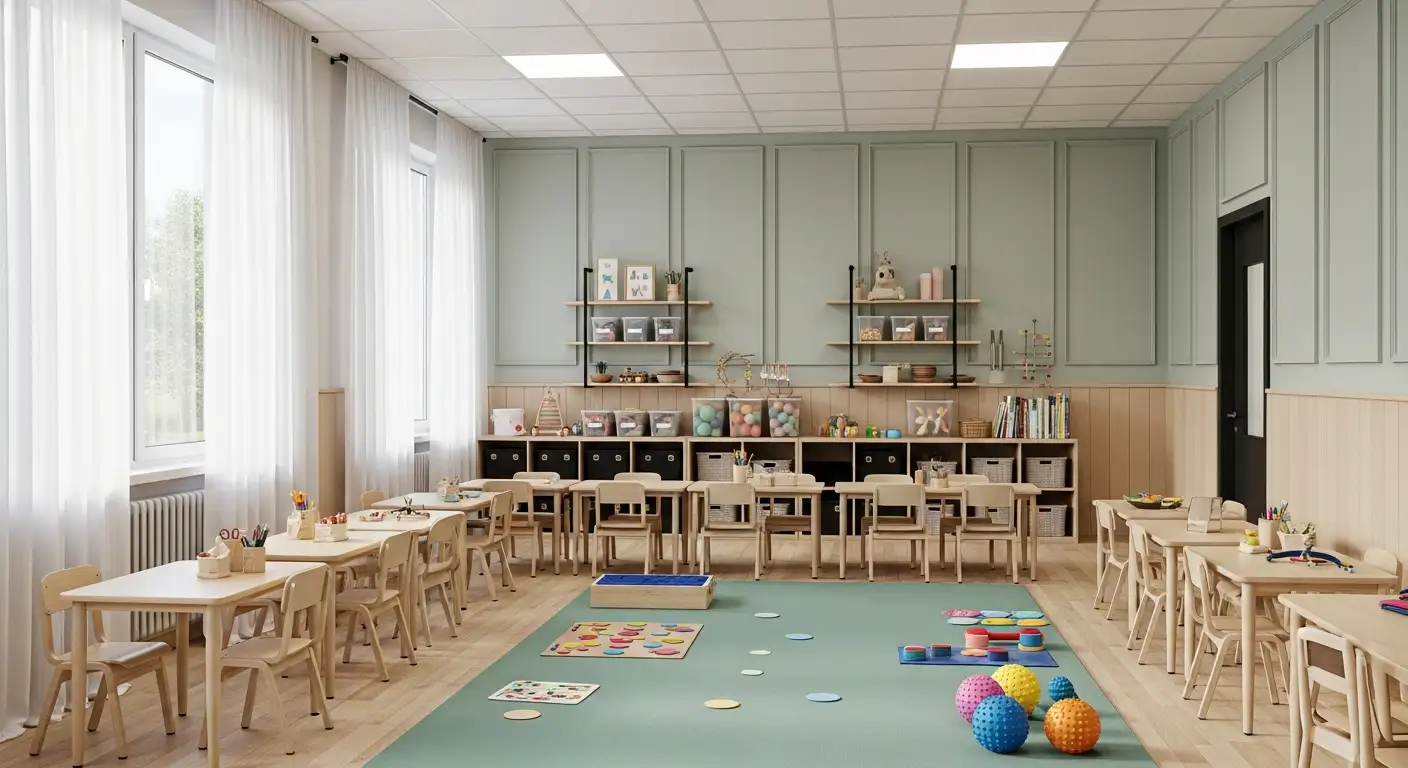Helping Kids Learn to Adapt to Change Gracefully
November 11, 2025
Supporting Children with Autism Through Change: Evidence-Based Strategies for Success

Understanding the Challenges of Change for Children with Autism
Change can be particularly challenging for children with autism spectrum disorder (ASD), often leading to anxiety, frustration, and behavioral challenges. This article explores effective, research-backed strategies to help children adapt gracefully to new routines, environments, and transitions by leveraging therapeutic approaches, primarily Applied Behavior Analysis (ABA), alongside supportive practices that emphasize individualized care and collaboration with families and professionals.
What is ABA Therapy and How Does It Support Children with Autism?
Definition and goals of ABA therapy
Applied Behavior Analysis (ABA) therapy is a scientifically validated method designed to enhance socially significant skills for children with autism. It focuses on fostering positive behaviors such as improved communication, social interaction, and everyday adaptive skills. At the same time, it aims to decrease challenging or disruptive behaviors through systematic approaches grounded in analyzing the triggers and consequences of actions.
ABA therapy is highly individualized, ensuring techniques are tailored to each child’s unique needs. This tailored approach promotes independence and adaptability, helping children cope more confidently with life’s changes and daily transitions.
Key techniques used in ABA
ABA employs a variety of targeted methods including positive reinforcement, where successes are praised to encourage desirable behaviors (e.g., saying "Great job putting your dishes in the sink!"). Visual supports—such as schedules, social stories, and the Tell-Show-Do strategy—help children understand expectations and upcoming changes clearly.
Other techniques include Functional Communication Training to replace frustration-related behaviors with effective communication skills, and gradual exposure and role-playing to familiarize children with new routines. Providers also create reinforcement systems that reward desired behaviors with praise or favored activities.
Role in improving adaptability and managing transitions
Transitions, such as moving homes, starting school, or changes in caregivers, can provoke anxiety for children with autism. ABA therapy helps by building skills that support flexibility and emotional regulation. Structured visual schedules reduce uncertainty, while social stories frame new situations positively to prep children mentally.
Therapists teach coping and calming strategies, promoting self-regulation and helping children adapt step-by-step to change. Encouraging choice within set boundaries fosters a sense of control, reducing oppositional responses. Collaboration among therapists, educators, and families ensures strategies are consistent and effective across environments.
Together, these ABA techniques empower children with autism to handle transitions with more confidence and less stress, improving their overall quality of life.
Who Are the Professionals Behind ABA Therapy?

Qualifications of ABA Providers
ABA therapy is delivered by trained professionals specialized in behavior analysis. Two primary roles are involved: Board Certified Behavior Analysts (BCBAs) and Registered Behavior Technicians (RBTs). BCBAs complete advanced education including graduate-level ABA coursework, accumulate between 1,000 to 2,000 hours of supervised practical experience, and successfully pass a certification exam overseen by the Behavior Analyst Certification Board (BACB). Many BCBAs hold master's degrees in psychology, education, or related fields.
Roles of BCBAs and RBTs
BCBAs are responsible for designing individualized treatment plans based on thorough assessments. They develop strategies tailored to each child’s unique needs, ensuring data-driven and ethical interventions. RBTs provide the direct implementation of ABA programs under the guidance of BCBAs. While RBTs often hold bachelor's degrees and complete specific ABA training, their work involves hands-on assistance, data collection, and reinforcing positive behaviors during therapy sessions.
Training and Ethical Standards
Both BCBAs and RBTs adhere to strict ethical guidelines to ensure the well-being of the children they serve. Continuous professional development is essential, including ongoing supervision and training updates. This dedication to ethical practice and education ensures that therapy remains effective, respectful, and individualized, supporting children with autism in building skills and managing transitions confidently.
ABA Therapy Goals and Techniques for Navigating Change

What are the common goals and techniques used in ABA therapy for autism?
ABA (Applied Behavior Analysis) therapy focuses on creating individualized goals tailored to each child's needs. These goals often aim to improve communication, social skills, self-care, and day-to-day routines, while simultaneously reducing anxiety and challenging behaviors.
How does ABA therapy help children manage change?
When supporting transitions and change, ABA therapy employs a range of specialized techniques. Visual supports such as schedules and first-then boards provide predictability, making upcoming changes clearer and less intimidating. Social stories offer simple, positive explanations of new situations to prepare children mentally.
What specific strategies are used to build coping and communication skills?
ABA incorporates Functional Communication Training (FCT) to teach effective ways for children to express their needs and feelings, reducing frustration. Gradual exposure introduces new routines step-by-step, while role-playing lets children practice changes in a safe environment. Additionally, calming and coping tools support emotional regulation during transitions.
What is the role of positive reinforcement in ABA?
Positive reinforcement remains central, rewarding desired behaviors with praise or preferred activities. For example, acknowledging a child's success in adapting to a new routine fosters adaptability and confidence.
Overall, ABA therapy combines individualized planning, supportive visual aids, communication skill-building, and emotional regulation techniques to help children navigate change more smoothly and confidently.
Measuring Progress and Effectiveness in ABA Therapy

How does ABA therapy measure progress and effectiveness for individuals with autism?
ABA therapy depends on systematic data collection to track and evaluate improvements in targeted behaviors. Data is gathered on the frequency, duration, intensity, and quality of specific behaviors, enabling therapists to monitor changes over time.
Behavior tracking involves tools such as the Verbal Behavior Milestones Assessment and Placement Program (VB-MAPP), which assesses communication and social skills milestones. These standardized assessments provide objective measures of skill development.
Therapists create visual graphs representing behavioral data, which assist in spotting trends and determining the success of interventions. Anecdotal observations during therapy sessions also inform understanding of the child's progress.
Parent and caregiver feedback is crucial as it offers insights into how skills translate to home and community settings, ensuring interventions remain relevant and effective.
The use of SMART goals (Specific, Measurable, Achievable, Relevant, Time-bound) promotes clarity in progress monitoring. These goals allow for targeted adjustments to treatment plans and reinforce the child’s developmental growth.
Overall, combining data-driven methods, assessment tools, visual aids, and collaborative input helps ABA therapy maintain a robust and individualized approach to measuring effectiveness.
The Vital Role of Parents and Caregivers in Supporting Change

What role do parents and caregivers play in ABA therapy for autism?
Parents and caregivers are vital partners in ABA therapy, contributing crucial insights about their child's unique strengths and needs. Their consistent involvement helps translate therapeutic gains into daily life, creating a stable foundation for the child.
Reinforcement at home and collaboration with professionals
Successful ABA therapy depends heavily on parents reinforcing positive behaviors and skills between sessions. This includes using visual supports, maintaining routines, and praising accomplishments such as "Great job putting your dishes in the sink!" Caregiver training sessions empower parents to confidently use ABA techniques, while regular communication with therapists ensures interventions remain tailored and effective.
Strategies for maintaining consistency and modeling flexibility
Maintaining consistent routines provides children with the predictability that supports their emotional security during change. Parents also model flexibility by starting with small adaptations and gradually introducing new activities, showing children how to cope with change positively. This balance helps children generalize skills beyond therapy and confidently manage transitions in various environments.
Creating an Environment That Eases Transitions

Why Are Routines and Predictability Important?
Children with autism thrive on routines and predictability, which provide a sense of safety and reduce anxiety during transitions. Consistent routines help lessen uncertainty, enabling children to anticipate and prepare for changes more comfortably.
How Do Visual Supports Help?
Visual supports such as daily routines, visual schedules, event sequences, first-then boards, and countdown calendars help clarify upcoming activities or changes. These tools reduce confusion by giving children a clear picture of what to expect, supporting smoother transitions.
What Role Do Safe Spaces Play?
Creating safe, calm-down areas offers a positive environment for children to manage emotions and self-regulate. Rather than serving as punishment zones, these spaces provide comfort and enable emotional recovery during stressful moments.
How Do Accommodations Reduce Frustration?
Providing practical accommodations tailored to the child's needs—like larger plates to ease mealtime or Velcro shoes for easier dressing—helps reduce frustration and fosters participation. These adjustments set the child up for success and encourage active engagement.
Together, maintaining familiar routines, using visual supports, forming safe spaces, and making specific accommodations build a supportive environment that eases transitions for children with autism, helping them adapt confidently and with less anxiety.
Complementary Therapies and Collaborative Approaches
How Are Other Therapies Integrated with ABA for Autism Transitions?
In managing transitions for children with autism, combining applied behavior analysis (ABA) with other therapies enhances overall support. Speech and language therapy plays a critical role in improving communication skills, using techniques such as signs, gestures, pictures, or electronic devices to help children express their needs effectively. Occupational therapy focuses on fostering independence in daily living tasks like dressing and eating, which are often challenged during changes in routine.
Sensory integration therapy addresses difficulties related to sensory processing, helping children adjust better to new environments or routines that might otherwise feel overwhelming.
Why Is Collaboration with Educators and Therapists Important During Transitions?
Successful transitions—such as starting school or moving to a new home—require teamwork among parents, educators, and therapists. Educators and therapists, including Board Certified Behavior Analysts (BCBAs) and Registered Behavior Technicians (RBTs), work together to tailor strategies specific to the child's needs. This collaboration ensures consistency in approach and helps rehearse and prepare the child for changes using visual schedules, social stories, and gradual exposure.
In schools, planning includes creating safe spaces and coordinating with educational staff to reduce anxiety and foster adaptability.
How Do Calming and Coping Tools Complement ABA Therapy?
Alongside ABA, calming and coping tools are essential for emotional regulation during transitions. These tools might include break areas, sensory-friendly objects, or stress-relief strategies taught through therapy. Encouraging children to take breaks and use coping mechanisms supports self-regulation and prevents overwhelming frustration.
Using positive reinforcement in combination with these tools empowers children to handle change confidently. The integration of such techniques allows for a supportive environment where children can gradually build flexibility and resilience.
Empowering Children With Autism to Thrive Through Change
Helping children with autism learn to adapt gracefully to change requires a thoughtful blend of evidence-based therapies, individualized strategies, and collaborative support from families and professionals. ABA therapy plays a pivotal role by providing measurable, adaptive interventions that build communication, social skills, and emotional regulation necessary for successful transitions. When combined with supportive environments, parental involvement, and complementary therapies, children gain confidence, flexibility, and resilience to navigate life's inevitable changes with greater ease and positivity.
References
- Helpful strategies to promote positive behavior
- ABA Therapy Techniques to Help Your Child Handle Change
- Treatment and Intervention for Autism Spectrum Disorder
- Autism Transition Strategies: Helping Children Adapt with ...
- How to Measure ABA Progress: A Guide for Ohio Families
- How to Track Progress in ABA Therapy Through Reports ...
- Measuring Progress: Tracking Developmental Milestones ...




.jpg)

